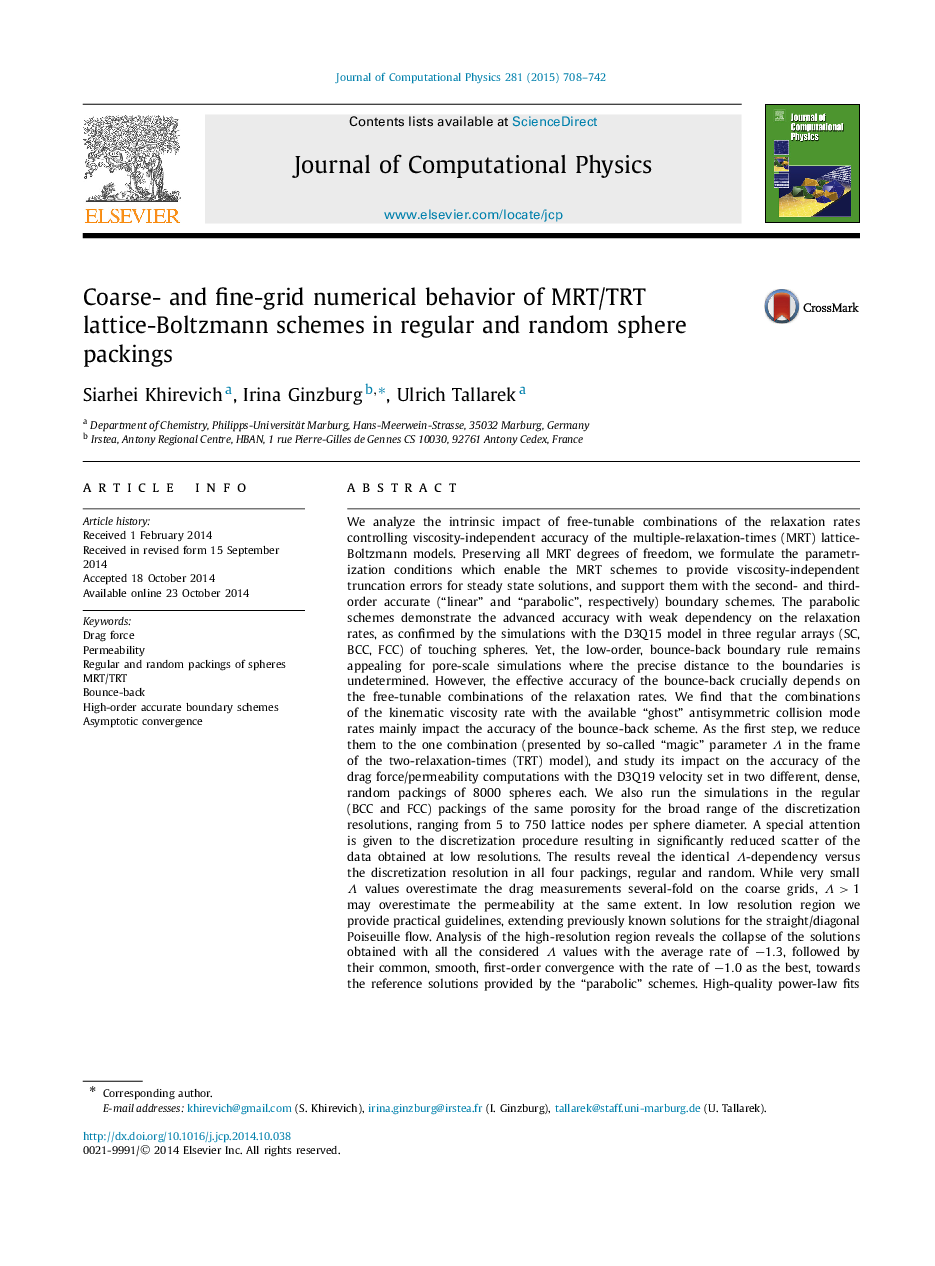| Article ID | Journal | Published Year | Pages | File Type |
|---|---|---|---|---|
| 6932067 | Journal of Computational Physics | 2015 | 35 Pages |
Abstract
We analyze the intrinsic impact of free-tunable combinations of the relaxation rates controlling viscosity-independent accuracy of the multiple-relaxation-times (MRT) lattice-Boltzmann models. Preserving all MRT degrees of freedom, we formulate the parametrization conditions which enable the MRT schemes to provide viscosity-independent truncation errors for steady state solutions, and support them with the second- and third-order accurate (“linear” and “parabolic”, respectively) boundary schemes. The parabolic schemes demonstrate the advanced accuracy with weak dependency on the relaxation rates, as confirmed by the simulations with the D3Q15 model in three regular arrays (SC, BCC, FCC) of touching spheres. Yet, the low-order, bounce-back boundary rule remains appealing for pore-scale simulations where the precise distance to the boundaries is undetermined. However, the effective accuracy of the bounce-back crucially depends on the free-tunable combinations of the relaxation rates. We find that the combinations of the kinematic viscosity rate with the available “ghost” antisymmetric collision mode rates mainly impact the accuracy of the bounce-back scheme. As the first step, we reduce them to the one combination (presented by so-called “magic” parameter Î in the frame of the two-relaxation-times (TRT) model), and study its impact on the accuracy of the drag force/permeability computations with the D3Q19 velocity set in two different, dense, random packings of 8000 spheres each. We also run the simulations in the regular (BCC and FCC) packings of the same porosity for the broad range of the discretization resolutions, ranging from 5 to 750 lattice nodes per sphere diameter. A special attention is given to the discretization procedure resulting in significantly reduced scatter of the data obtained at low resolutions. The results reveal the identical Î-dependency versus the discretization resolution in all four packings, regular and random. While very small Î values overestimate the drag measurements several-fold on the coarse grids, Î>1 may overestimate the permeability at the same extent. In low resolution region we provide practical guidelines, extending previously known solutions for the straight/diagonal Poiseuille flow. Analysis of the high-resolution region reveals the collapse of the solutions obtained with all the considered Î values with the average rate of â1.3, followed by their common, smooth, first-order convergence with the rate of â1.0 as the best, towards the reference solutions provided by the “parabolic” schemes. High-quality power-law fits estimate that the bounce-back would reach their accuracy (obtained at about 200 nodes per sphere) for two-order magnitude higher grid resolution.
Related Topics
Physical Sciences and Engineering
Computer Science
Computer Science Applications
Authors
Siarhei Khirevich, Irina Ginzburg, Ulrich Tallarek,
